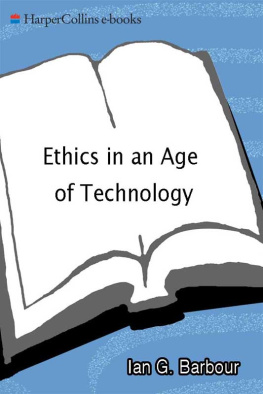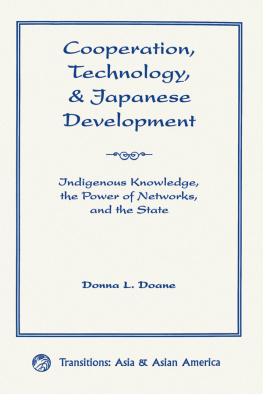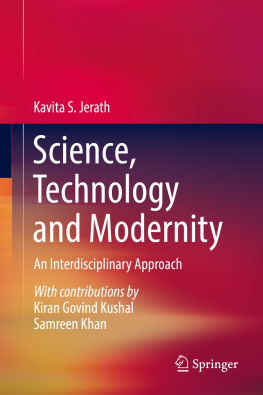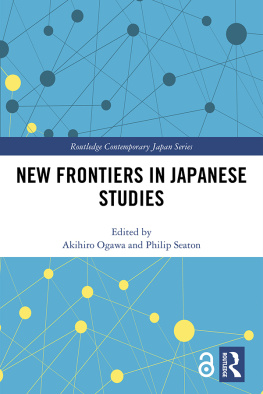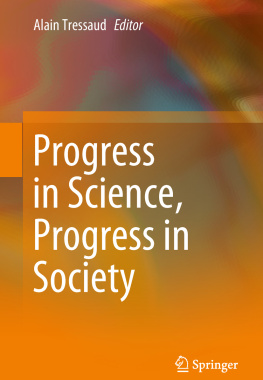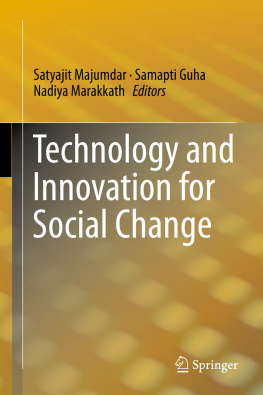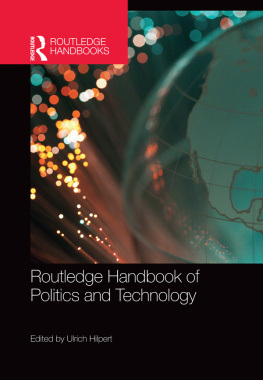SCIENCE, TECHNOLOGY AND SOCIETY IN POSTWAR JAPAN
Japandese Studies
General Editor: Yoshio Sugimoto
Images of Japanese Society: Ross E. Mouer and Yoshio Sugimoto
An Intellectual History of Wartime Japan: Shunsuke Tsurumi
A Cultural History of Postwar Japan: Shunsuke Tsurumi
Beyond Computopia: Tessa Morris-Suzuki
Constructs for Understanding Japan: Yoshio Sugimoto and Ross E. Mouer
Japanese Models of Conflict Resolution: S. N. Eisenstadt and Eyal Ben-Ari
Forthcoming
Enterprise Unionism in Japan: Hirosuke Kawanishi
Group Psychology of the Japanese in Wartime: Toshio Iritani
Changing Japanese Suburbia: Eyal Ben-Ari
Rise of the Japanese Corporate System: Koji Matsumoto
Science, Technology and Society in Postwar Japan: Shigeru Nakayama
Transferred Development: Western Technology and the Industrialisation of Japan: Ian Inkster
SCIENCE, TECHNOLOGY AND SOCIETY IN POSTWAR JAPAN
Shigeru Nakayama
First published in 1991 by
Kegan Paul International
This edition first published in 2010 by
Routledge
2 Park Square, Milton Park, Abingdon, Oxon, OX14 4RN
Simultaneously published in the USA and Canada
by Routledge
270 Madison Avenue, New York, NY 10016
Routledge is an imprint of the Taylor & Francis Group, an informa business
Shigeru Nakayama 1991
Transferred to Digital Printing 2010
All rights reserved. No part of this book may be reprinted or reproduced or utilised in any form or by any electronic, mechanical, or other means, now known or hereafter invented, including photocopying and recording, or in any information storage or retrieval system, without permission in writing from the publishers.
British Library Cataloguing in Publication Data
A catalogue record for this book is available from the British Library
ISBN 10: 0-7103-0428-5 (hbk)
ISBN 13: 978-0-7103-0428-5 (hbk)
Publishers Note
The publisher has gone to great lengths to ensure the quality of this reprint but points out that some imperfections in the original copies may be apparent. The publisher has made every effort to contact original copyright holders and would welcome correspondence from those they have been unable to trace.
Preface
Aim
The study of Japanese science and technology (especially technology) is a fashionable subject at the present time, and numerous English language works appear month by month claiming to explain the miracle of the recent rise of Japanese technology. Most of these works are, however, superficial treatments of Japans recent technological performance, seriously lacking in historical insight. This book is an attempt to introduce a critical examination of the mechanisms by which Japan has promoted science and technology by looking at its postwar historical development.
Western authors tend to generalize about Japan, their writing often reflecting the viewpoint of an outsider. On the other hand, some books written by Japanese authors which are available in the English language, remain superficial success stories, if not propaganda, of Japanese achievements, from which the Western reader is expected to learn some lessons. This is the first monograph by a Japanese author in the English language on the Japanese scientific community, looking at the impact of science and technology on Japanese society and vice versa.
Process
For several years I have headed a group research project, consisting of some fifty collaborators, on the subject of science, technology and society in postwar Japan, with the support of the Toyota Foundation. The outcome of this effort, a series of about twenty volumes in Japanese, will appear from 1991 until the end of this century. Prior to embarking on this project, I edited a book entitled Nihon no gijutsuryoku (Japanese Technological Power, Asahi, 1986), which discussed some of the issues to be raised in the series. Furthermore, I have published Kagaku to shakai no gendaishi (Contemporary History of Science and Society, Iwanami, 1981), which deals mainly with the postwar period up until the 1970s. By combining these works, and several other writings of mine in both Japanese and English, I have produced an English-language, single-volume outline of postwar Japanese science and technology in its social context. I have intentionally avoided using the word history in the title as this book cannot possibly include all the ongoing historical investigations of the larger project. This volume consists mainly of my own personal observations and interpretations. It has been written with the intention of providing an outline structure for the forthcoming Japanese language series, as well as its English counterpart which will appear in the future as an historical work, and which will include specialized volumes on topics such as Japanese atomic energy and micro-electronics.
By that time, this volume will, hopefully, function as a single volume outline history of postwar Japanese science and technology. My argument is more based upon my impressions and reminiscences of the period which I have lived through rather than meticulous documentation. Later volumes in the project will provide the latter. Inevitably, my bold generalizations will invite debate and discussion. I would be happy being thought of as a provocative writer rather than an authoritarian one!
Acknowledgements
This project started in 1986 at Professor Yoshio Sugimotos home in Melbourne, when he persuaded me to write a book for his series. Three years later, again under his auspices and his encouragement, I had an opportunity to spend eight months at La Trobe University with ample free time and facilities provided to concentrate on preparing the first draft. His secretary, Mary, kindly edited an early version of the draft of the manuscript.
I was also fortunate to have the opportunity to work with Morris Low, a promising young scholar of the history of Japanese science in the city of Melbourne at the same time. We met once each week and discussed the subject. He has edited various versions and also supervised the English corrections made by Liza Powderly of my first draft. During my stay in Australia, I was visited by Hitoshi Yoshioka, whose critical comments have always stimulated me. Dr. Bowen Dees has kindly provided me with information relating to the Occupation Period and has also assisted in editing a draft.



